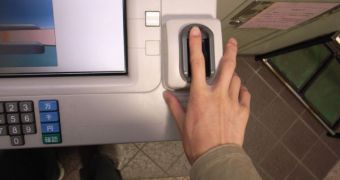Fear of terrorist attacks has prompted a redefining of the concepts of security and safety throughout the world, and especially in Europe and the United States, the largest potential targets. After 2001, more and more retinal scanners and fingerprint-recognition devices have been installed in sensitive areas such as airports and public buildings, but their main drawback has been that they take a lot of time to complete their readings, and they can cause unrest, as people have to queue to get to where they're going.
Now, an European team of scientists is working on a way to create a device that will no longer rely on scanning eyes or palms, but rather on scanning the brain waves each person has. While fingerprints and retina layouts can be falsified, the waves that cause all the process in the brain cannot, and they are truly unique for ever person. The team says that a success in this field could mean far less queues, and a faster detection of suspicious individuals in crowded or sensitive areas.
“Unobtrusiveness was one of the most important aspects of what we were trying to achieve. This is the first time this type of biometrics has been used for identification, and it solves most of the problems other biometric systems face,” the HUMABIO project coordinator, Dimitrios Tzovaras, explains. The program is financed by the ICT strand of the Sixth Framework Programme for research.
Thus far, the team has only managed to come up with 3 prototypes, which it has put to the test in various conditions – inside a truck, to detect the motions of the driver, in an airport, to analyze employees coming to work, and in a laboratory in Germany, where access to an important machine needed to be restricted.
“In the first pilot, the seat cover was as comfortable as a normal [one], and the facial and voice sensors did not bother the driver at all. In the other two pilots, people at the airport and lab were able to move around freely in the monitored areas while their identities were authenticated. The goal of unobtrusiveness was attained, while security and safety was considerably enhanced compared to conventional systems,” Tzovaras shares.
The technology is still “young,” so a few years will pass until it's implemented on a large scale. But the groundwork is there, and the prototypes are assuring. Undoubtedly, their design will be improved even further, in time, which will bring about a new age of speed for the airports' and official buildings' check-in.

 14 DAY TRIAL //
14 DAY TRIAL //